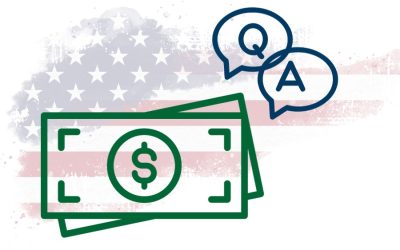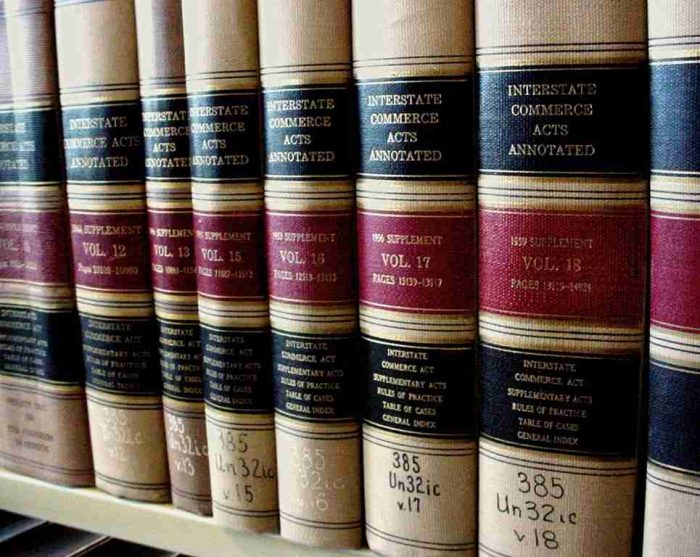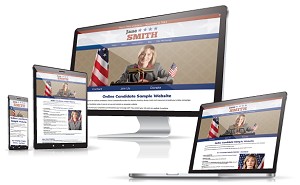Political Campaign Fundraising FAQ: How to Raise Money for Your Campaign Online
The pursuit of public office is closely tied to the pursuit of raising money. If you’re a political candidate today, you’ll need funding to mount an effective campaign. And if you’re new to the process, get up to speed early—don’t wait until the thick of election season.
Key takeaways:
- Choose a Secure, User?Friendly Donation Platform: Opt for a platform with strong security and easy integration with your campaign website.
- Optimize the Donation Page: Keep it simple, distraction?free, and clear on impact.
- Use Structured Donation Levels: Offer suggested amounts plus a custom option to lift average gift size.
- Maximize Your Website: Clear CTAs, strong story, and a straightforward donation flow boost conversions.
- Integrate Fundraising: Align appeals with your overall campaign messaging and site content.
- Leverage Storytelling & Personalization: Emotion and relevance drive action.
- Stay Compliant & Say Thanks: Follow campaign finance rules and promptly acknowledge every donation.

How do I set up a secure online donation platform?
To set up a political campaign donation page, start with a trusted fundraising platform. Make sure it has SSL encryption, PCI compliance, and simple reporting for campaign finance laws. It should plug right into your campaign website and support multiple payment options, including mobile wallets like Apple Pay and Google Pay. Before launch, test it end?to?end so you don’t run into broken links or failed payments.
Before you raise a dollar: open a campaign bank account. Then compare political donation platforms and choose one that fits your race and reporting needs.
Pro tip: We’ve seen too many candidates skip testing—only to send a bad link or discover the processor wasn’t approved. Don’t let that be you.
“In all, just 158 American families had donated half of all the money to candidates on the ballot [in the 2016 election].” — Evan Osnos, Wildland: The Making of America’s Fury
Related: How Online Political Donations Work
How can I improve my donation page?
A strong donation page is simple and distraction?free. Use a clear call?to?action like “Donate Now,” show suggested amounts, and let people enter their own number. Highlight security and explain how contributions will be used. A clean, mobile?friendly page can dramatically increase online campaign contributions.
- Design for clarity: Minimal fields. Easy to scan on mobile.
- Reinforce trust: Security badges, privacy/refund links.
- Suggested amounts + custom: Keep max within legal limits.
- Show impact: “$25 prints 50 door hangers,” “$100 boosts one day of ads.”
Example: A mayoral candidate adds a progress bar and “$25 funds 50 door hangers.” A congressional race embeds a short video and a “Why donate now?” panel.
Can offering different donation levels increase contributions?
Yes. Donation tiers give donors a nudge to give more. List a few preset amounts—low, medium, and high—and always include a custom field. That way, someone who can give $1,000 won’t stop at $500. This simple step encourages higher political donations.
Related: What To Know Before You Accept Political Donations Online
How can my campaign website help maximize fundraising?
Your website is the hub of your political fundraising strategy. Add donate buttons in your header, footer, and on key issue pages. Tell your story and show what donations achieve. Keep everything mobile?friendly. A fast, easy donation process helps your campaign raise more money online.
How can I integrate fundraising with other aspects of my website?
Integrating fundraising into your campaign site means making it part of the experience. Add donation links in blog posts, event pages, and policy sections. Use QR codes at rallies and supporter testimonials on your homepage. This creates a seamless political fundraising experience.
- Unified messaging: Keep appeals aligned with your platform.
- Strategic placement: Link to donate on high?traffic pages.
- Content synergy: End posts with “See how your donation powers this work.”
- Event integration: Use donate links and QR codes for live and virtual events.
- Testimonials: Add quotes from community leaders and supporters.
- Transparency: Share goals and milestones to motivate action.
“The money in politics is a cash cow for the media.” — Noam Chomsky
What types of content can I use to promote fundraising?
Political fundraising content should be varied. Short videos, blog updates, infographics, and testimonials all work. Show exactly how donations help your campaign. Engaging content makes supporters more likely to give and share your message.
Ideas: City Council: recap a community clean?up + donate CTA. State Rep: infographic on legislative priorities + “Help us scale outreach.”
Can social media enhance my fundraising efforts?
Absolutely. Social media fundraising for political campaigns is one of the fastest ways to build momentum. Share your donation link often, use built?in tools like Facebook fundraisers, and interact with supporters. Social engagement helps drive donations back to your campaign website.
What makes a fundraising message more compelling?
A compelling fundraising message is specific and authentic. Tell donors exactly what their contribution funds—“$50 prints 1,000 door hangers”—and tie it to your campaign’s goals. Keep the voice genuine. Visuals like photos and short videos make appeals even stronger.
How can I use storytelling to boost online donations?
Political storytelling is one of the best ways to raise money. Share real stories from your community, structure them with a beginning, middle, and end, and show how donations make a difference. People respond when they see themselves in the story.
More on political storytelling.
What are best practices for raising money through email?
Email fundraising works best when it’s targeted and simple. Segment your list, use strong subject lines, and focus each email on one clear ask. Track open rates and conversions so you can refine your campaign email fundraising strategy over time.
How do I communicate urgent donation needs?
Urgency drives action. Use time?sensitive language like “Donate before midnight” or “We’re $500 short of our goal.” Show progress bars or countdowns to make deadlines real. Urgent political fundraising appeals often perform best in the final stretch of a campaign, especially near GOTV.
How can I attract first?time donors?
First?time political donors need a simple, trustworthy experience. Keep the process quick, highlight why their first gift matters, and use social proof—like “Join 1,000 supporters who’ve already donated.” Make it easy on mobile to expand your donor base.
What role do recurring donations play?
Recurring donations give your campaign a steady stream of income. Add a “Make it monthly” option on your donation form and remind donors how much sustained support matters. Monthly donor programs build long?term stability.
How should I handle and acknowledge small donations?
Every dollar counts. Always acknowledge small campaign donations with a thank?you email, text, or even a shoutout on social media. Thanking political donors—large or small—builds trust and encourages them to give again.
How can donor feedback improve my fundraising?
Ask your donors what’s working and what’s not. Use surveys, email replies, or quick polls on social media. Acting on donor feedback shows you value their support and helps improve your political fundraising strategy.
How do I ensure my fundraising efforts are legally compliant?
Compliance in political fundraising isn’t optional. Learn the campaign finance laws for your race, use platforms that capture required donor info, and keep accurate records. File reports on time. When in doubt, check with a campaign finance attorney.
What other channels should I consider (beyond the website)?
- SMS (text?to?donate): Opt?in texting drives fast, small?dollar gifts; link to your donate page.
- Peer?to?peer (P2P) pages: Let supporters host their own mini?fundraisers to tap new networks.
- Event checkouts: QR codes and mobile POS at rallies, meet?and?greets, and house parties.
What mistakes should I avoid in online fundraising?
Common fundraising mistakes include long forms, vague asks, and forgetting to thank donors. Don’t ignore data—track what’s working and adjust. And don’t underuse social media. Avoiding these errors in political fundraising will help your campaign raise more money.
Final thoughts
Raising money is hard, but a secure platform, a streamlined donation page, and consistent, authentic storytelling make it far more achievable. Keep your appeals aligned with your message, report progress, follow the rules, and thank every supporter.
Need a fundraising?ready campaign website? Get started today.
Related: Comparing Political Donation Platforms – Our Recommendations
Our book, Running for Office as an Online Candidate is designed packed with strategies for local political and issue-specific campaigns. It is available for download and in print from Amazon.com.
What Are The Basic Requirements To Run For Public Office?
Local government is the fundamental building block of our government structure. Local officials and agencies are in the best position to understand the needs of the constituents they serve, and actively work to solve their problems by improving infrastructure, education, and other key aspects of life.
Running for office is a great way to make a difference in your town, city, or county. If you are planning to run, then you need to prepare yourself by learning about the position you seek, getting your name out to the public, and learning how to build out a campaign organization.
But before you do all that, one of the first steps to run for elected office is to find out if you are qualified to be a candidate. This applies if you are running for council, mayor, sheriff, judge, state legislature, or even for a position on your local school board.
All elected positions have specific qualifications
To be eligible as a state, county or local political candidate, there are basic qualifications you’ll need to meet. These requirements are determined by the laws and regulations of your state and district.
There are three basic requirements to hold political office in the United States:
- You need to be a citizen.
- Be least 18 years old.
- Live in the district you want to represent.
These conditions will apply no matter your political party or even if you are a write-in candidate. In some states, you must be a resident of the district for at least one year or two years before the election.

Even local elections cost money. There’s no getting around that.
Local offices are generally the most affordable of all political offices. It is not uncommon for someone to run for local office with hardly any money at all. However, most candidates must raise funds to pay for their campaigns.
The cost of running a political campaign depends on the position sought, the number of people running for office, and how many votes are needed to win. A local election can usually cost anywhere from a few hundred dollars to a $1 million or more.
The 2021 Boston mayoral race was one of the most expensive races in American history, with candidates spending over $5 million combined. It’s a city, but still a local race.
Local races typically raise and spend far less than campaigns for a state or national office. Regardless, it is necessary to put together a budget and a strategy to raise money. Even if you don’t think you’ll need to spend too much, your opponent may be preparing otherwise…
Free Campaigning Tips: Subscribe for free guides and updates from Online Candidate.
You need time to prepare for your campaign
The process of political campaigning is not easy. Running for local office is not as difficult as running for a national office. The run time of the campaign varies depending on the type of position you are aiming to win, but it can be anywhere from one to two years.
You need enough time to prepare yourself, your family and to get the word out about your intentions.
Some years ago, we had a candidate run for village council. It was a small, local race that only lasted a month or two. A week before the election, the candidate was asked by a newspaper about where he stood on a major local issue. He said he ‘didn’t want to tip his hat’ too early. Because he waited so long to ramp up his candidacy, he never got the chance.
And he didn’t win the election.
Registering to run as a political candidate
Registering a campaign committee is the first official step to gaining access to the ballot for a primary or general election. This can be done through your local board of elections office.
Each office has different guidelines. Whether you are an experienced politician or just getting started, you and your team will need to follow any compliance rules. Contact your local board of elections for more information on how to get on the ballot.
A bank account and financial structure must be established
Almost every campaign is going to require money to be spent on advertising, staff, and other expenses. The first step to running for office is to have a dedicated campaign bank account. This account will allow you to take in money through donations and spend money during the election season.
You’ll need to put together a campaign team
Election campaigns need a diverse range of staff to be successful. They need people to arrange events, make phone calls, knock on doors, and raise money. Individual roles in include a treasurer, volunteer coordinator, communication director and various consultants.
Some positions on the team are more important than others. For example, a campaign manager is usually the most important person in charge of the campaign. They must make sure that everything is done on time and to plan.
The lack of a campaign manager can be a recipe for disaster. A well-run campaign needs a combination of organization, strategy, and execution. Without the right person in charge, even well-spoken candidates might find themselves in trouble.
Tip: In almost no circumstance should a political candidate act as their own campaign manager.
Start the campaigning process
Be informed and know your positions on the issues that are happening in your district. You should also know your district boundaries, and familiarize yourself with voting districts. There are many different viewpoints and opinions, so it is important to be aware of all sides as you develop your election platform.
Other questions
Are there legal or criminal background restrictions for running for public office?
Legal or criminal background restrictions vary by jurisdiction. Some areas disqualify candidates with felony convictions, while other may have less stringent criteria. You’ll need to check your local election laws for specific restrictions or details.
How does the political party system influence the process?
Navigating the political party system involves understanding local party dynamics. Candidates should research their party’s stance on issues. They might also consider the benefits of running as an independent. This choice depends on the local political landscape.
What are the common pitfalls or mistakes first-time candidates make?
First-time candidates often enter a race with a lack of planning and poor organization, often consisting of the just the candidate and maybe a few other volunteers. To avoid these common pitfalls, candidates should start preparing early and get a reliable team together as soon as they can.
If you are running for county or local government, there are certain prerequisites you will need to meet. Learning what you need to know head of time will you save time and effort as you prepare to start your campaign.
Getting ready to run? Start your campaign with Online Candidate. We provide campaign website packages and marketing services for candidates.
Pros and Cons of Running a Slate of Candidates Online
A slate website is a way of promoting multiple candidates running for a multi-seat election. The candidates are typically from the same party or align together on major campaign issues. In essence, they become a ‘slate’ of candidates, hoping to win an election as a group.
“A slate is a group of candidates that run in multi-seat or multi-position elections on a common platform.” – Wikipedia
Running slates of political candidates is popular because it allows politicians to reach out to different groups and address their concerns with different policy options.
The positives of running a candidate slate
Slates are often created early in the election process. The formation of slates allows candidates’ to campaign together by sharing a common slogan, campaign materials and promotional efforts. It tells voters that the candidates work well with each other and share common positions on major issues.
A multiple-candidate website can be used as a hub to introduce the candidates and lead voters to related websites and other online material. Rather than three or four websites for each political candidate, there is efficiency in promoting a single website. It can be a focal point for advertising and online fundraising. This tactic often works well for issue-based or grassroot campaigns.
Obviously, it costs less to build a single site than to have each candidate create their own.
Slate websites also work well for local political parties. Parties usually have a general platform, and they promote individual candidates by featuring short biographies and linking out to individual websites, if they have one.
School Board Campaigns: School board races often feature parents running together as a slate. We’ve seen these types of campaigns win by clearly messaging shared values like improving education and advocating for more student resources. By focusing on common goals and leveraging grassroots support, a group campaign tends to be successful at the ballot.
Get Free Campaigning Tips: Subscribe for free guides and updates from Online Candidate.
The negatives of running a candidate slate online
It may be difficult for voters to square the candidate’s differing views on certain issues. This assumes, of course, that the candidates have more than just a simple bio and ‘share’ all the issue pages. In our experience, it’s unlikely that everyone will agree entirely on a single set of issue positions.
Also, if each candidate is fundraising separately, collecting donations through a shared site can be tricky. This leads to a few questions:
- Does every candidate have their own fundraising page?
- How do you deal with the candidates that have fewer resources to run?
- Do donors have to give multiple times if they want to support the entire slate?
- What happens when one popular candidate overshadows the others?
On a practical level, it can be difficult to get content or updates on the website. Even a single political organization can have a hard time updating a website. If every candidate requires their approval before changes to the website can be made, nothing will get updated. That’s why in either case, we recommend assigning a web coordinator to handle updates.
Finally, sharing a site limits the freedom of the candidates to each ‘do their own thing’. Even if one or two decide to really work their part of the website, they may end up overshadowing the other candidates who post less material on the site.
Successful Example: In a recent city council race, we built a slate website that helped elect multiple candidates. The group worked cohesively, sharing events, endorsements, and they had a unified platform. They effectively messaged their shared goals while also highlighting individual strengths. This balance allowed voters to see the slate as a collaborative team and trust each member’s abilities.

Expanding Beyond Online Campaigning
Joint Campaign Events
Organize shared events, such as town halls, rallies, or community meetings, to engage voters and present the slate as a united front. These events allow candidates to connect directly with constituents and leverage their collective appeal. For example, hosting a “Meet the Slate” event can draw larger crowds than individual candidate events.
Shared Canvassing and Volunteer Coordination
Pool volunteer resources to expand your door-to-door canvassing and phone banking reach. By coordinating efforts, your slate can maximize voter outreach while saving time and energy. Use centralized tools or coordinators to manage volunteer schedules. Canvassers and callers should also have all the materials they need about individual candidates and the collective slate.
Cross-Promotion and Endorsements
Where they can, candidates should endorse each other during speeches and media appearances. Highlight shared goals and mutual support for policies. For example, a candidate for mayor might endorse the slate’s city council candidates during debates or interviews.
Additional Strategies for Slate Campaigning
Fundraising Beyond Online Donations
Consider hosting joint fundraising events, such as dinners or galas, to raise funds for the slate. Shared events can allow individual candidates to receive donations, even while they benefit from shared exposure. Make sure there are financial agreements ahead of time to prevent tension from those who may individually raise more or less money.
Unified Messaging and Conflict Resolution
As mentioned above, put together core platform points that all candidates agree for cohesive messaging. A slate should speak with one voice. Regular strategy meetings can help resolve disagreements and keep the campaign focused on the main message. If there are problems or conflicts, a campaign manager or mediator can help maintain harmony within the slate and its factions.
Engaging Local Organizations and Coalitions
Community groups, unions, and advocacy organizations can help you build a wider support in the community. These groups can help spread the message and mobilize voters for election day.
The truth is that not everyone will win
Keep in mind that running a slate of candidates does not mean that all or none will win. We’ve seen instances where half the slate has won, and half did not. Similar candidates, similar positions, but some win and some lose.
Particularly in local elections, success often comes down to how well particular a candidate is known and liked (or disliked).
Our Recommendations
Our recommendation is that each candidate should have their own website where they control their own messaging and donor experience. It’s fine if someone want to be part of a separate slate website, but any bio links should point to the candidate’s individual website.
Simply trying to ride the coattails of others is a risky strategy.
Ultimately, a politician wins or loses on his or her own merits. Whether a slate of candidates should combine online efforts or not depends entirely on the circumstances.
If you a single candidate or you are running with others, Online Candidate provides a great political website platform. Full-featured, easy to use, and backed with exclusive campaign resources.
How Voter Questions Can Help Shape Your Campaign
A List of Our Best Election Slogans
A good slogan enhances visibility and resonance with your electorate. Below is a list of election slogans for political candidates and campaigns. These focus on the theme of electing or voting for a specific candidate. These can be used for local, state, and federal campaigns.
- Elect [Name] for Real Reform
- Change Starts Here: Elect [Name]
- With [Name], We Can Make a Difference
- Elect [Name], Champion for Change
- [Name]: Working Tirelessly for You
- Vote for [Name], Vision for Tomorrow
- Elect [Name]: Commitment You Can Trust
- Vote for [Name], a True Advocate
- Vote for Integrity and Dedication—Vote [Name]
- Elect [Name] for Proven Strength
- Action Speaks Louder: Elect [Name]
- Build a Better [town/city/village] with [Name]
- Your Voice Matters—Elect [Name]
- Vote for [Name], a Leader for [Smart Growth/Lower Taxes/Etc.]
- Time for Change? Vote [Name]
- Elect [Name] for Proven Solutions
- Revitalize Our City—Vote [Name]
- Clean Streets, Clear Future—Vote for [Name]
- Choose [Name]—A Fresh Start for [Location]
- Leadership You Can See—Vote [Name]
- Elect [Name] for Clear Choices
- Celebrate [Name]’s Achievements—Reelect [Name]
- Vote for [Name], Stand for Independence
- [Name]: Fighting for Our Families
- Elect [Name] for Effective Solutions
- [Name] Works Hard for [Location]—Vote [Name]
- Elect a Fresh, Energetic Voice—[Name]
- People’s Choice—[Name] for [Location]
- Integrity in Action—Vote [Name]
- Leading [Location] Into the Future—Vote [Name]
- Results, Responsibility, [Name]
- Dedication Without Compromise—Vote [Name]
- Vote for [Name], the Change We Urgently Need
- Trust [Name] for Experienced Governance
- Rebuild With Us—Elect [Name]
Here are more slogans specifically for candidates who are running for sheriff, judge, or school board positions:
- “Safety First, Safety Always: Elect [Name] for Sheriff”
- “Justice Served with Integrity: Vote [Name] for Judge”
- “Commitment to Community: [Name] for Sheriff”
- “Fair Decisions, Trusted Leadership: Elect [Name] for Judge”
- “Protecting Our Future: Vote [Name] for School Board”
- “Leadership in Law Enforcement: [Name] for Sheriff”
- “Balanced Education for a Brighter Tomorrow: Elect [Name] for School Board”
- “Your Voice in Justice: Vote [Name] for Judge”
- “Safety, Service, Security: [Name] for Sheriff”
- “Educational Excellence for Our Children: [Name] for School Board”
The tough part is picking one that best fits your personality and issues. By using a campaign slogan in promotional materials and advertisements, you can improve your visibility and drive greater voter turnout on Election Day.
Need a Campaign Website?
Online Candidate offers multiple website packages to help you launch fast and look professional. Find out which one fits your campaign.
What To Know Before You Accept Political Donations Online
With the decrease in expenses and technical barriers, it’s possible today for almost any political candidate to raise money online. However, it takes a bit of planning to properly set up your donation infrastructure. And if you wait to begin the process, you may lose out on valuable fundraising time.
If you plan to do online political fundraising this election season, start early. Or as early as you can. There may be laws limiting when you can solicit political donations. It’s best to understand those rules before you begin campaigning activities.
How to accept online political donations:
- You need a bank account for your campaign
- You need a payment processor
- You need a campaign website
- It takes time for your account to be approved
- You may not receive your money immediately
- Costs are not the only factor
- Should you use a generic payment like PayPal or Stripe?
- Your campaign is responsible for following the law
- Plan your fundraising strategy

Get our Online Campaign Tips Guide.
It’s FREE right now!
You need a bank account for your campaign
Setting up a campaign bank account is one of the first things a political organization must do. A stand-alone account allows you to collect donations and contributions from supporters in order to make campaign purchases. This is a critical step in setting up an online donation program. You’ll need that bank account in order to continue to the next important step…
You need a donor payment processor
A third-party processor lets you accept online donations without having a merchant account of your own. Instead, the processor let you use their merchant account under their own terms of service, usually with very little setup required. A variety of fundraising and payment processors exist, and a number of donation platforms are designed specifically for political purposes. They include Anedot, Raise the Money, ActBlue, and WinRed.
With online fundraising, there are no hassles of collecting checks and cash, making regular trips to the bank, or keeping accurate records. Fundraising services solve this problem. They both save you time while managing donations to your account and tracking the numbers for you. When your contributions clear, the funds are automatically deposited into your checking account. This makes your required state or FEC financial reporting and disclosures easier. Your treasurer will thank you!
Recommended Reading: Comparing Political Donation Platforms: Our Recommendations

You need a campaign website
Any non-profit or political campaign needs more than just a Facebook page or a link to a donation page. Considering the role of trust in political campaigns, it’s important to provide a central website for donations. A website builds trust. Providing potential donors with a single domain name to look up makes it easy for contributors to find you.
Online donation services provide ways to set up donations through a website. It can be something as simple as a link from the site to the service’s donation page or embedded donation forms that match the website’s look and feel. Some donation platforms (more on this below) provide tools to integrate the ability to donate through social media accounts.
A good political campaign website is one of the best tools in your fundraising efforts. The site’s design needs to look clean and inspire trust. SSL security is a must, and it should have a terms of use page. Your donation form itself should list any donation limits and disclaimers required for campaign compliance. Setting up a domain and website is not expensive and may be the best money you spend on your campaign.
For affordable and flexible website design and hosting options, check out our Candidate Website Packages.

It takes time for a fundraising account to be approved
It varies by processor, but it can typically take anywhere from 3 to 7 days to get your credentials verified by the vendor. You will need to supply specific organizational and, in some cases, personal documentation. Some services might allow you to begin taking donations before that time, but no money will be transferred to your campaign bank account until you are approved. This is another reason to get the process started early.
You may not receive your donations immediately
Online donations do not immediately appear in your bank account. There is typically a processing delay, as with any bank transaction.
Some processors will transfer your money automatically. But this is not always the case. With PayPal, for example, you’ll need to manually transfer money from PayPal to your bank account. Other services may transfer funds automatically, but there is typically a few days’ delay from the actual donation date.
Some vendors allow for recurring contributions. This allows you to have a donor automatically contribute on a regular basis throughout the election season. This can work well for smaller donors who might not be able to give a large amount all at once but can contribute a significant amount over time.
Costs are not the only factor in choosing a vendor to collect donations
Which payment vendor is better – a platform that charges a transaction cost of 3% or one that charges 6%? It’s easy to assume that the lower your transaction cost, the more money you will make. But fees don’t tell the whole story. More ‘expensive’ and politically-geared processing vendors tend to have more built-in tools. These include recurring payment options, custom contribution pages, social media widgets, and online viral tools.
Bringing in more from political fundraising websites can more than offset higher processing fees.
Additional contribution tools can lead to more and larger donations. Both of which will put more money into your campaign, even after accounting for higher transaction costs. Of course, those tools and resources will only work to your advantage if you actually use them…
Advantages of political donation platforms:
Political donation platforms provide transparency and accountability, which is a major advantage over traditional methods of donating. They also provide other features to make the donation process more effective, including the ability to:
- Create dedicated donation and event forms customized to match your campaign branding.
- Have one-time or recurring donation options to allow multiple donations throughout the campaign.
- Social media integration to share updates and spread the word.
- Text-to-give and email-to-donate tools.
- Set contribution limits and add custom disclaimers to your forms.
TIP: Use a processor that doesn’t charge any monthly fees or setup costs. See our campaign resources page.
Put a strategy in place to use the tools with different marketing channels through which you can raise money. That includes your website donation page, social media accounts, and online advertising. Donors should be able to save their information so they can return later to contribute again and again. A recurring-contribution option allows contributors to give regularly right up to Election Day. This helps increase overall donations and makes them easier to process as the contributions are made automatically throughout the election season.
Take advantage of recurring donations
According to a recent Classy report, recurring donors were worth 5.4 times more over their lifetime than one-time donors. If the donation platform for your campaign allows for recurring donations, make sure you take advantage of that feature.
A recurring donor is much more valuable than one-time donors. Those recurring funds will be especially valuable toward the end of your campaign as you ramp up your get out the vote efforts.
Tip: Make sure you have recurring contributions turned off by Election Day!
Should you use a generic payment service like PayPal or Stripe?
Some organizations try to use generic payment systems like PayPal, Square, Venmo, or Google Shopping Cart for political purposes.
Generic payment services do not make the best political donation platforms, and here’s why:
Generic payment processors are not the best way to collect donations. Those services do not easily comply with Federal Election Commission or state donor requirements. For example, they do not ask for a donor’s employer, occupation, or contact information.
For these reasons, we do NOT recommend setting up site like PayPal for political donations. Website contributions are more complicated due to additional information that political campaigns require. This donor information can be captured through PayPal with custom programming. But that’s not something a small campaign usually has the time or resources to implement.
Another problem with vendors like Square, Venmo, Apple Pay, and Google Pay is that you don’t receive your donations at the same time that the donor’s card is processed. You get the money from the aggregator based on their specific terms. That could be on a monthly schedule, every two weeks, or even based on having a specific amount in the account. When someone donates, your campaign will need the money ASAP. Delays in cash transfers to your bank account can prevent money from being spent on advertising and print materials when it’s needed most.
It’s a better idea to choose a service that caters to political organizations. They include ActBlue, Raise The Money, Anedot, FundHero, and more. They include built-in tools and social media integrations. All of these services listed are frequently used by our own clients. You’ll want to compare fees, features, and reviews when deciding which to choose. If you need a recommendation for setting up your website, contact us.
Your campaign is responsible for following the law
Again, local election laws vary from state to state, and from office to office. There are restrictions ranging from when you can start election fundraising, how much you can raise, from whom you can raise money to donor disclosure rules.
Some laws depend on the municipal office you are running for. For example, judges may not be allowed to participate in campaigning activities, including soliciting donations, during particular times they are in office.
The Federal Election Commission (FEC) requires federal political campaigns to use their best efforts to collect and report the name, mailing address, occupation, and employer of individuals whose contributions exceed $200 in a given election cycle. PACs and political parties have additional disclosure and compliance requirements.
You are responsible for providing proper disclaimers and restrictions when taking donations online. Know the law and follow it to the letter. That will keep you out of trouble.
Plan your online political fundraising strategy
Now you know the basics of how to accept political donations online. It makes no difference whether you’re running for a state office, Congress, mayor, or even your local city council. Just as you may have offline fundraisers and events, you’ll need to supplement those activities online with a way to collect donations through the web. You’ll need to set up a clear plan for how you will accept and track those donations.
While you can solicit donations via email and social media, you’ll still want website as a central hub for your online fundraising efforts. Special landing pages can collect political online donations from various channels. Knowing where the money is coming from and what promotional efforts are the most successful will help guide your strategy.
If you are ready to start, get to it! Your donors are waiting…
Online Candidate campaign websites can tie in with any fundraising service you choose. With built-in tools and exclusive resources, we are the choice for hundreds of campaigns every election cycle.











